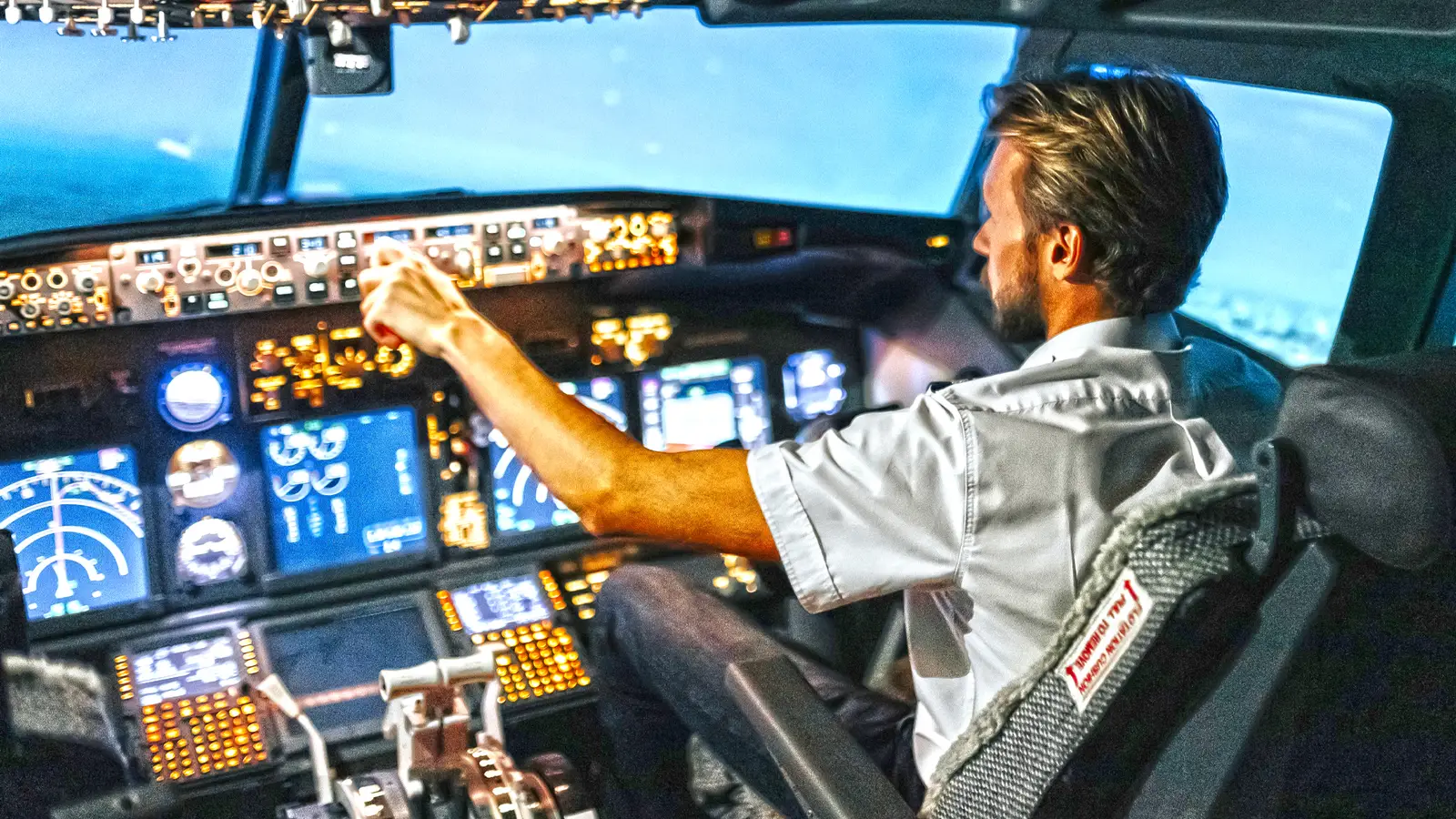Copyright Simple Flying

Flying still carries a bit of glamour, and few jobs wear that badge more proudly than an airline pilot. But the sparkle can hide a patchwork of realities: pay and conditions differ wildly depending on where you work. In the USA, pay scales are shaped by strong demand, a competitive regional system, and years of deregulation; in Europe, legacy carriers, tighter regulation, and cost pressures create a very different picture. It's not over: more uncertainty in the system comes from random disruptions. For instance, the US government shutdown has halted much of the FAA’s certification and medical processing work, and several airports in the US are affected by drastic reductions in the numbers of flights. Hundreds of new pilots found their checkrides delayed, instructors sat idle, and airlines warned of longer training pipelines. That is a reminder that even in one of the world’s highest-paid aviation markets, a career in the cockpit can still hinge on forces far beyond the runway. This article walks through those contrasts, from regional first officers to long‑haul captains, looking at training bills, career progression, and the everyday tradeoffs that come with each market. Whether you’re training for a headset or just curious about who earns what on the flight deck, you’ll see how geography, rules, and airline culture all land on a pilot’s payslip. Training And Entry: How The Path To The Cockpit Shapes Pay The journey to becoming an airline pilot starts long before the first paycheck, and both in the US and in Europe, training costs and structure heavily influence early-career earnings. In the United States, aspiring airline pilots must log at least 1,500 flight hours to qualify for an Airline Transport Pilot (ATP) certificate. Training programs like those offered by ATP Flight School or Thrust Flight typically cost between $80,000 and $100,000, though flight instructors can build hours while earning modestly. Once hired, first officers at regional airlines earn between $55,000 and $85,000 per year, but that number is rapidly increasing due to pilot shortages. According to BLS (May 2024 data), the median annual wage for US airline pilots now exceeds $219,000, with major airline captains regularly earning $300,000+. In Europe, the entry path looks quite different. Pilots can train through Integrated ATPL programs, completing their licenses in about 18–24 months for €80,000–€120,000. However, because many European carriers require pilots to self-fund type ratings (often costing €20,000–€30,000), new first officers can start out significantly in debt. Entry-level pay also tends to be lower: €35,000–€50,000 for a short-haul first officer at a low-cost carrier, according to Euronews (2025). In some lower-cost markets such as Romania, entry pay can still hover near €32,000, while in Switzerland, averages exceed €113,000, reflecting Europe’s striking regional disparity. While both continents demand substantial upfront investment, the return on that investment diverges sharply. US pilots typically enjoy a faster climb up the salary ladder, whereas their European counterparts face longer pay plateaus in the early years. Pay Progression: The Climb From Right Seat To Captain Once qualified, how quickly can a pilot’s salary grow? The answer depends heavily on region, airline, and fleet. In the United States, the current pilot shortage has completely reshaped pay scales. Regional airlines like American Eagle (which encompasses affiliates and third-party carriers such as Envoy, SkyWest, and Republic Airways) and Horizon Air now offer signing bonuses up to $100,000, and some first officers can upgrade to captain within two years. Major carriers such as Delta Air Lines, United Airlines, and American Airlines recently renegotiated contracts that raised top captain pay to over $400,000 annually, with hourly rates surpassing $475/hr on long-haul fleets. By contrast, European pay progression tends to be more gradual and structured. According to EasyEASA, a first officer flying for a major European carrier might earn between €50,000 and €90,000 annually, depending on fleet and experience. Long-haul captains at big legacy airlines, such as Lufthansa, Air France, or British Airways, typically earn €160,000 to €270,000, while low-cost carrier captains (e.g., Ryanair or Wizz Air) earn closer to €120,000–€180,000. The key difference? Seniority and labor organizing. In the US, contracts are negotiated collectively under strong pilot unions like ALPA, ensuring transparent pay structures and predictable career advancement. In Europe, union power varies by country: Scandinavian, French, and German unions are strong, while pilots in Eastern Europe generally have fewer protections and lower pay. Regional Vs Major Airlines: A Tale Of Two Markets Regional flying is where most pilots start, and it’s where salary disparities are most visible. In the US, regional carriers serve as vital feeders for the major network airlines. Historically, regional pay lagged far behind, but since 2022, wages have nearly doubled. Airlines like American Eagle now pay regional captains $150,000–$180,000, with signing bonuses on top. This surge reflects the growing difficulty in recruiting pilots amid a shrinking supply pipeline. In Europe, the picture is different. “Regional airline” often means something closer to a low-cost or ACMI operator. Pilots on smaller European carriers (like CityJet or Air Dolomiti) typically earn €50,000–€80,000, with limited progression unless they move to a major or flag carrier. In some cases, contract pilots work under “pay-to-fly” schemes, where they fund their own line training, a practice mostly eliminated in the US due to stronger labor protections. Despite lower European pay, many pilots value the more predictable work-life balance and standardized rosters offered by EU carriers, something often lacking in the high-intensity schedules of US regionals. Widebody Captains: The Top Of The Scale At the top of the profession sit widebody captains, the ones commanding aircraft like the Boeing 777, Boeing 787 Dreamliner, or Airbus A350 on intercontinental routes. Their pay reflects both experience and responsibility. In the US, a senior Boeing 777 captain at Delta or United can earn $400,000–$420,000 annually, with per diem and profit-sharing pushing total compensation even higher. Contracts also include generous retirement contributions and travel benefits. In Europe, Lufthansa A350 captains earn around €250,000, with Air France and British Airways long-haul captains being in a similar pay range. The pay gap narrows at this level, but remains tilted toward the US once adjusted for purchasing power and taxation. At these altitudes — both literally and financially! — lifestyle differences often outweigh pay differences. US pilots may fly longer duty hours and spend more time on reserve, while their European counterparts typically enjoy more predictable rosters under EASA’s flight time limitations (FTL). Cost Of Living, Taxes, And Work-Life Balance Money doesn’t tell the whole story. The real difference often lies in how much of that salary pilots actually keep, and the lifestyle that comes with it. In the US, pilots benefit from lower average income taxes, particularly in states like Texas and Florida, where no state income tax is levied. However, health insurance costs and less generous vacation policies can erode some of that advantage. Many US airlines offer profit-sharing, meaning total pay can swing significantly year to year. In Europe, higher taxes are offset by stronger social systems and benefits, including free healthcare, paid leave, and pension schemes. Pilots at airlines like Lufthansa or KLM may earn less on paper but enjoy greater job security and structured retirement options. These lifestyle tradeoffs influence career decisions just as much as raw salary figures. Some pilots move across the Atlantic to chase pay, while others return home for family stability or predictable schedules. The Future Of Pilot Pay: Will Europe Catch Up? As demand for air travel rebounds and pilot shortages deepen, both markets are entering a new era of competition. In the US, pay will likely continue to rise, albeit at a slower pace, as regional airlines consolidate and major carriers expand fleets. Pilot unions remain strong, and with Boeing and Airbus predicting a need for over 600,000 new pilots by 2040, salaries are unlikely to fall anytime soon. In Europe, change is coming more slowly. Low-cost carriers dominate short-haul routes, keeping pressure on legacy airlines. However, the spread of long-haul low-cost models and the post-pandemic resurgence of travel may push wages upward, especially as younger pilots demand fairer contracts and more transparent working conditions. Some carriers, such as Iberia and Finnair, are already introducing productivity-based pay and flexible rostering systems that reward experience and efficiency. Over time, Europe may not match the US in pure numbers, but the gap could narrow as the labor market tightens.



